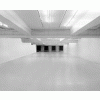 |
Osage Gallery
4/F, Union Hing Yip Factory Building,
20 Hing Yip Street,
Kwun Tong, Kowloon, Hong Kong map *
tel: +852 2389 8332
send email
website
|

Enlarge
|
| A Lesson in Extremes
|
|
| by Osage Gallery
Location: Osage Kwun Tong
Artist(s): HU Xiang Qian, TSUI Kuang-Yu, WAZA GROUP, Jun YANG
Date: 22 Jan - 21 Feb 2011
In his most recent video work Superflous Knowledge (2010), artist Hu Xiangqian tries his own hand at surviving in the wilderness for fifteen days armed only with a how-to-book detailing various survivalist techniques. The work is an elegant articulation of the extreme differences between learned knowledge and lived experience, and simultaneously hints at tropes of perseverance, randomness and, ultimately, failure. The four video works presented in A Lesson in Extremes collectively explore exaggerated contexts, forms, conditions, and scenarios as a way of analyzing and disclosing the rifts that define coming to terms with our own lived reality. Pairing acute psychic distance or highlighting dramatic juxtapositions between past and present, local and global, these works not only reflect the notion of the extreme but what it means to inhabit a space at the margins of perceived normalcy. Combining an air of performativity and a penchant for placing oneself in radical or incongruous situations, works by Hu Xiangqian and Tsui Kuang-Yu attempt to reveal the artist’s implicit role in encountering and interpreting his own surroundings; while works by WAZA Group and Jun Yang choose a more abstract approach, reflecting upon urban change and the inner workings of the imagination and memory.
In 2009 Artic Diary (2010), artist Tsui Kuang-Yu transposes everyday urban scenarios in Taipei with the extreme conditions of the North Pole. The vignettes are linked to the artist’s participation in an expeditionary residency program in the Arctic Circle and point to curious parallels and wild disparities upon returning from his experiences in the harsh environment. The carefree and bucolic scenes of WAZA Group’s Post-Space 1 (2008), by contrast, are comprised from found film footage from the 1950s and 1960s and come across as not only deeply nostalgic but also highly incongruent with the current images of the rapidly urbanizing Wuhan. Set to wistful music, the pieced together clips appear as one narrative with recurring characters but in fact represent disjointed episodes and unconnected individuals from a distant past. Jun Yang’s Paris Syndrome (2008) is a re-contextualized portrayal of a psychological disorder by the same name known to afflict tourists who visit or vacation in Paris. A breakdown is known to occur when tourists—commonly Japanese ones—are unable to reconcile the dream-image with the harsh reality of Paris itself. Yang’s film situates this trauma within the context of contemporary China by looking at fairy-tale urban constructions conjuring real and mythical European counterparts.
Private View and Reception: 21.01.2011, 6.00pm to 8.00pm |
|
|
|
|
